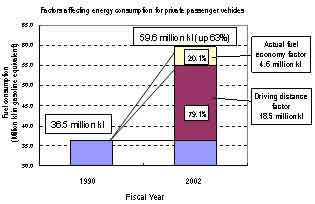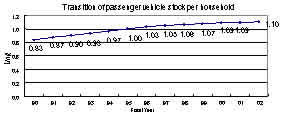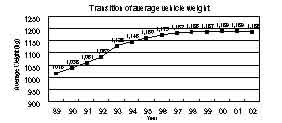| Publication of responsibilities and criteria for enterprises
Type 1 Designated Energy Management Factory
(Annual energy use: 3,000 kl)
- Appointment of Energy Manager
- Submission of mid- and long-term plans
- Submission of periodical reports on energy use
←When the Ministry finds the rational use of energy to be significantly insufficient in consideration of the criteria, it shall instruct, announce to the public, or order (penalize) the particular factory
Type 2 Designated Energy Management Factory
(Annual energy use: 1,500 kl)
- Appointment of a qualified person for energy management of type 2 designated factory
- Submission of periodical reports on energy use
- The divisions of heat and electricity, which were separated in the past, shall be integrated for control purposes (represented in crude-oil equivalent).
←When the Ministry finds the rational use of energy to be significantly insufficient in consideration of the criteria, it shall advise the factory in question
[Modified points of the law]
- The divisions of heat and electricity, which were separated in the past, shall be integrated for control purposes in view of today's actual circumstances at factories and business establishments.
- Consequently, the level of energy use as the standard to designate factories was lowered to increase the number of factories and business establishments subject to designation. (From approximately 10,000 to 13,000)
- Establishment of registered examination body system. (If a factory or business establishment is examined and verified by a registered examination body, the factory or the like shall be excused from the submission of periodical reports.)
|
- Carriers (Freight, passenger) Publication of responsibilities and criteria for enterprises Designated carriers
(Vehicle ownership: More than 200 trucks or more than 300 items of rolling stock or the like)
- Submission of mid- and long-term plans
- Submission of periodical reports on energy use
←When the Ministry finds the rational use of energy to be significantly insufficient in consideration of the criteria, it shall advise, announce to the public, or order (penalize) the operator in question.
- Consigners Publication of responsibilities and criteria for enterprises Designated consigners
(Annual cargo: 30 million ton kilometers)
- Submission of plans
- Submission of periodical reports on energy use required for consignment transportation
←When the Ministry finds the rational use of energy to be significantly insufficient in consideration of the criteria, it shall advise, announce to the public, or order (penalize) the consigner in question.
[Modified points of the law]
- Measures for the transportation sector are newly added. (Periodical reports shall be prepared from April 2007.)
|
Publication of responsibilities and criteria for owners of residences or buildings and clients for construction
- The clients, those who will modify buildings, and the owners of specified buildings shall be instructed or advised in connection with the design, construction, and maintenance of the buildings.
- The Ministry of Land, Infrastructure and Transport announces guidelines for the design and construction of residences.
Designated buildings
(Buildings including residences having a total floor area of 2,000 m2 or larger)
- Submission of notification of energy-saving measures to the competent authorities* by the clients and owners (specified clients etc.) who will construct or extensively modify designated buildings.
←When the competent authority finds the energy-saving measures to be significantly insufficient in consideration of the criteria, the authority shall advise or announce to the public the name of the owner in question.(* Competent authorities: Prefectural authorities, with district construction surveyors, governing construction authorization procedures)
- Periodical reports on maintenance of buildings with respect to measures by the designated clients etc. of buildings who have submitted notification to the competent authorities
←When the competent authority finds energy-saving measures to be significantly insufficient in consideration of the criteria, the authority shall advise the client etc. in question.
[Modified points of the law]
- Owners of buildings are newly designated as those subject to the measures (maintenance, repair, and modification)
- Notifications in the case of extensive modifications are also designated compulsory.
- Residences having a total area of 2,000 m2 or larger are included in the category of designated buildings, with requirements for notification newly designated.
|
Responsibilities for manufacturers or importers of energy-consuming equipment
Designated equipment Publication of criteria
(Top Runner standard)
- Energy conservation standards of passenger vehicles, air conditioners, television, etc., which are required to be higher than the performance of the respective top-running brands of commercialized products.
- LCD and plasma televisions, DVD recorders, and heavyweight vehicles are newly listed as products subject to the measures.
←When the Ministry finds it necessary to improve performance significantly, it shall advise or announce to the public.
|


